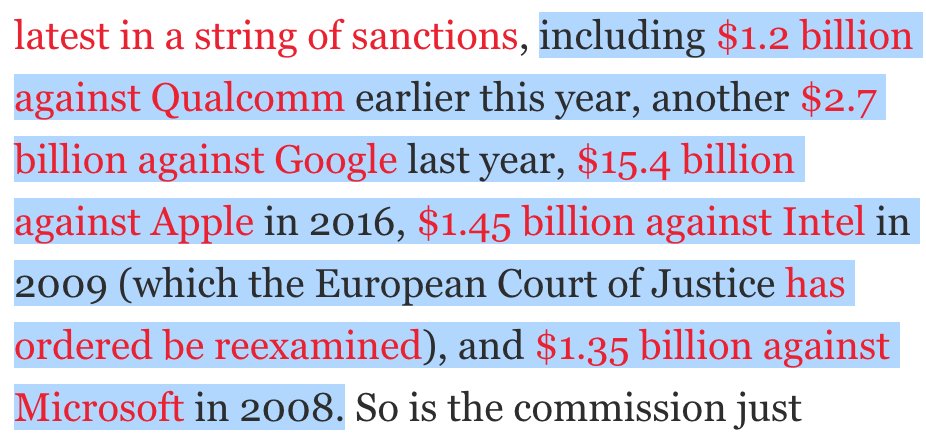Read his full piece here: firstround.com/review/how-sup…
PG says "It's when you made something people want"
@sama says "When users love your product so much that they spontaneously tell other people to start using it without you even asking them to do that."
PG’s is around desire, Sam's is around distribution
"Number one, you can always feel it when product/market fit is not happening. Customers aren't quite getting value, users are not growing quite that fast, word of mouth is not spreading, press who use it are a kind of blah, and the sales cycle takes too damn long."
But you can always feel it when product market fit is happening. Customers are buying as fast as you can add servers, you're hiring sales and support as fast as you can, ...money is piling up in your checking account, investors are staking out your house...
Do whatever is required to get to PM-fit Including changing out ppl, rewriting product, moving into a different market, telling customers no when you don't want to, telling customers yes when you don't want to, raising that 4th round of dilutive VC—Anything
Conversely, you see a surprising # of really well-run cos having all aspects of operations completely buttoned down, HR policies in place, great sales model, ... outstanding catered food, top tier VCs, heading straight off a cliff due to not finding PM-fit
Sean Ellis found a leading indicator—measure how many users would be very disappointed if they could no longer use the product.
Companies w/ over 40% often grow easily. Opposite for under.
If you have 40%, invest in growth.
1/ What is it that ppl love about X?
2/ What holds ppl back from falling in love w/ X?
If they love product for same reason, just find more of that user.
Spend 1/2 time doubling down on what users already love about X & other 1/2 on what’s holding others back
If you only address what holds users back, your competition will likely overtake you.
This insight can guide your product planning process, effectively writing your roadmap for you.
To stack-rank priorities, use a simple cost-impact analysis: label each potential project as low/medium/high cost, and similarly low/medium/high impact.
Impact from solving held ppl back is clear from survey.
Impact from doubling down on strengths is more intuitive
Ppl who enjoy your product for its greatest benefit
No massive consumer internet brand has ever grown primarily through viral loops or viral mechanics
They also always have virality through word of mouth
Which is why HEC's are so important.
1/ How would you feel if you couldn't use X? (very, somewhat, or not disappointed)
2/ What ppl would benefit most from X?
3/ What's main benefit you get from X?
4/ How can we improve X?
Send survey to ppl who've used X at least 2x in 2 weeks. ~40 responses is enough
1- Segment to find supporters & paint a picture of your high-expectation customers (very disappointed)
2- Analyze feedback to convert on-the-fence users into fans
3- Build your roadmap by doubling down on what users love and addressing what holds others back
4- Repeat
- wouldn't be "very disappointed" if X went away AND/OR
- don't experience the main benefit as your high-expectation customer
Do cater to the needs of customers who would be very disappointed and/or the ones who share the main benefit as your HEC.
They’ll request distracting features, present ill-fitting use cases & be very vocal, all before they churn out and leave you with a mangled, muddled roadmap
Acting on their feedback will lead you astray on your quest for PM-fit
By focusing on the right customers, you get more relevant feedback, you learn faster, you increase NPS, you get more word-of-mouth virality, with the community that matters most to you.
NPS score measures how strong your word of mouth effect is likely to be in others.
You need both, but figure out PM-fit first.
You don't want your churn to be more than 6-7% month to month or you're going to have a very hard time building meaningful business.
For a single player subscription tool, 2-3% month to month is great
3 reasons why companies may fail even w/ PM-fit engine:
1- Running out of money before they finish this process.
2- Co-founders breaking up.
3- Giving up.
If PM-fit score is 5-15%, Rahul recommends reconsidering the product
1- Understand competitive environment.
2- Come up w/ positioning
3- Develop pricing
Ask your target users four questions:
1- At what $ would you consider X to be so expensive that you wouldn't consider buying it?
2- At what price would you consider X to be priced so low that you would feel the quality couldn't be very good?
3- At what price would you consider X to be getting expensive?
4- At what price is X a bargain?
Only lower price if land-grab or 1st-mover advantage
Reid Hoffman: "If you're not embarrassed by the first version of your product, you've launched too late."
This applies to startups creating new markets, esp w/ network effects (LinkedIn, Airbnb)
In existing markets w/ great products, bar is different (E.g Notion)
“A startup should only launch for one of three reasons:
1- You need more users or customers to sell to.
2- You need more capital to spend.
3- You need more candidates to hire.”
I also recorded a podcast w/ @rahulvohra and @toddg777 about their new angel fund, and other company-building topics.
stitcher.com/podcast/villag…




